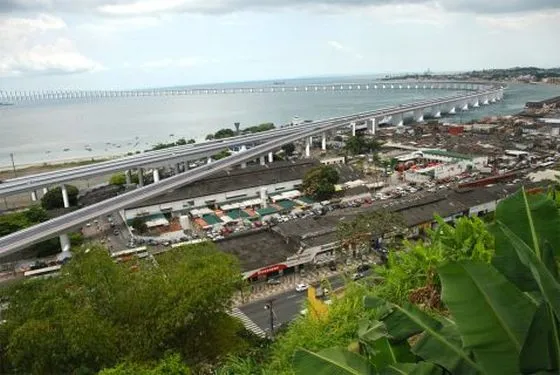In 2025, Brazil will build a $1.8 billion, 12-kilometer cable-stayed bridge linking Salvador and the port town of Itaparica on an island within the All Saints Bay (“Baía de Todos os Santos”)
Bridging these locations eliminates the need for long ferry rides or detours. This bridge will spur tourism and trade, aiding over 10 million people.
Planning this public-private project took five years. It’s a groundbreaking effort for Brazil to introduce a structure of this magnitude.
The project also includes 34 kilometers of roads, tunnels, and viaducts.
Upon its completion in 2028, the 12.4 km long bridge will become Latin America’s second-longest. It’s surpassed only by the Trans-Peninsular Viaduct connecting Mexico to Panama.
These elements ensure a crucial economic tie between Salvador and Itaparica, making travel easier.

This bridge will shorten travel for millions in Bahia, boosting economic growth. It opens up easier access to employment, education, and healthcare, promoting social mobility.
A Chinese consortium, including CCCC and China Railway 20 Bureau Group, won the 35-year contract.
Their $1.8 billion bid was the highest, marking a significant Chinese investment in South America.
This comes as part of China’s broader $54 billion investment in Brazilian infrastructure.
Despite delays and increased costs due to COVID-19, the project was green-lit in November 2020.
This move cements the bridge as a key link for Salvador and Itaparica and represents a strategic investment by China.
The Salvador-Itaparica bridge stands as a symbol of overcoming Brazil’s infrastructure gaps through global cooperation.
Once completed, it will highlight human creativity and economic growth in Bahia. Success depends on skilled management and collaborative governance, enhancing local well-being.

